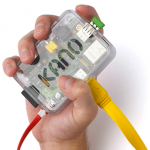Side hustles are no longer optional in South Africa. With food inflation still above 8 percent and electricity, transport and mobile data costs climbing…
iOS 8 review: incremental iDevice improvements

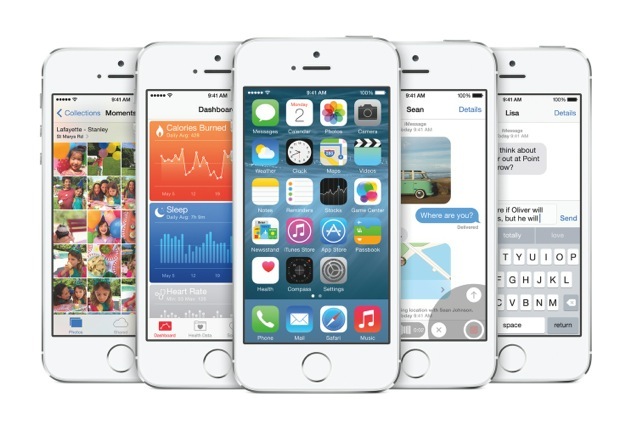
Apple announced iOS 8 during WWDC 2014 and was released to the public two days ahead of the iPhone 6 launch. One thing that you must know is that iOS 8 doesn’t bring any drastic changes that we’ve come to know from iOS 7, which brought a complete new UI design. The design of the latest update is largely based on iOS 7’s new flat and colourful design theme. iOS 8 is more about adding subtle changes and refinements to existing features but the most interesting bit about iOS 8 is that Apple is finally opening up to third-party developers, but just how open is it? That is something we’ll have to wait and see as developers use these new APIs to create the “freedom” Apple promised. So let’s jump straight ahead to the review and see if iOS 8 is worth enough to compete with the likes of Android L and Windows Phone 8.1.
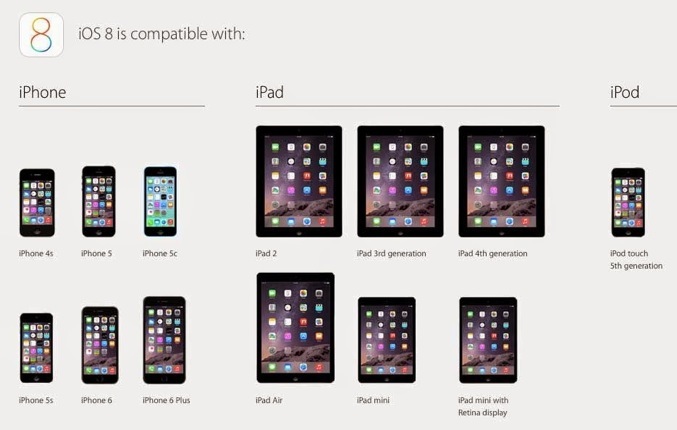
Before we begin, check if your iDevice makes the cut. iOS 8 is compatible with these iDevice’s only: iPhone 4S, iPhone 5, iPhone 5C, iPhone 5S, iPhone 6, iPhone 6 Plus, iPod Touch 5th Gen, iPad 2, iPad 3rd Gen, iPad 4th Gen, iPad Air, iPad Mini, iPad Mini with Retina Display. You’ve got one of those? Good, then let’s continue.
Messages, Mails, Phone & Contacts
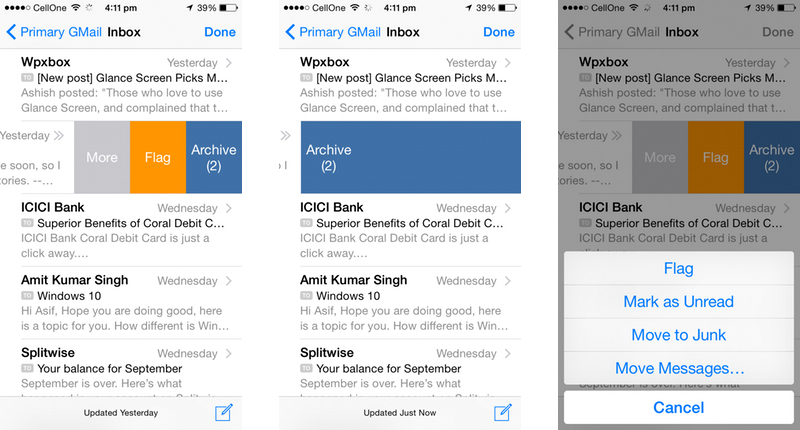

With the ever increasing usage of IM apps like WhatsApp and Snapchat, Apple has put in a lot of effort in improving its iMessage platform. iMessage now shows relatively larger image previews and while sending or receiving successive images/videos they are displayed in vertical comic strip-style. There’s an improved interface that lets you choose recently clicked images from the camera roll. Users can even send their current location to people or mute them by activating the “Do Not Disturb” option from the details interface. Group chats through iMessage is now possible, and so is naming these threads and removing yourselves from iMessage group conversations. Since it is competing with the likes of WhatsApp and Snapchat, iMessage now offers an option to send voice/video messages with an option to make them disappear after two minutes (no option to change this time). The method of recording voice messages is strikingly similar to that of WhatsApp’s way. But unlike the iMessage app for Mac OS X, there’s still no way to integrate Google Talk and Facebook chat within the Messages app in iOS which is the only glaring omission. Under Family Sharing, users can instantly send their current location to other members in the group.
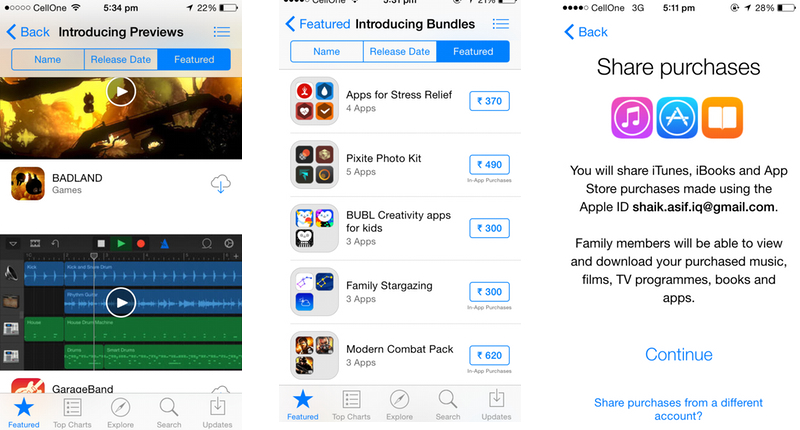
There are some usability additions in the Mail app in iOS 8. Swiping from left on the email thread displays an option to mark it as read or unread. Swiping from the right reveals Trash, Flag and More. Clicking on More reveals further options such as moving the mail to other folders. Long swiping from right archives the mail with no option to undo the action, so beware. When composing an email, you can activate the “Notify Me” feature which notifies you whenever anyone replies to the thread. Apart from rich text editing, users can replace a particular word in the mail body, quote it or insert inline photos/videos in the mail. There’s an option to define the word which takes you to a separate screen where its meaning is displayed in multiple languages. Users can even search the web or download dictionaries for multiple languages. The app can now understand specific things like phone numbers, email addresses or time and underlines them so that users can click and save those bits. Compose mail screen can be minimised so that users can refer to other mails, even grab information from them while the other is being composed. It is one of the smartest mobile mail apps I’ve used till date.
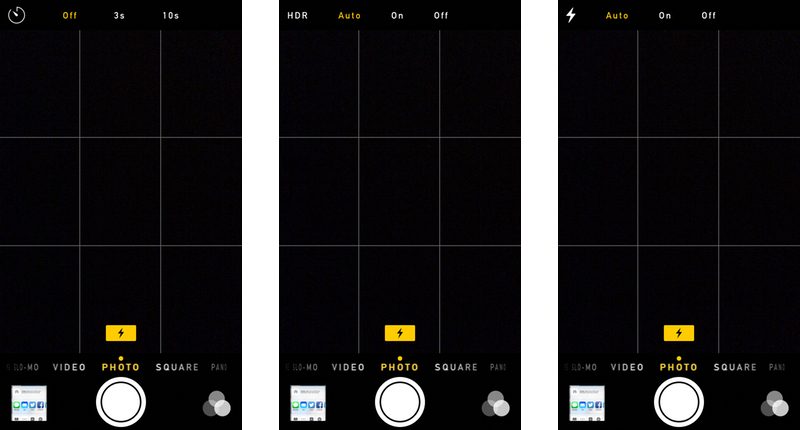
There aren’t many improvements or feature additions to the contacts or the dialing apps in iOS 8. You can set an option from the settings menu to show most contacted persons in the multitasking menu. Favourite contacts can be sorted manually. You can block certain contacts from the phone settings. There is still no smart dial option in the app, something which Google added in Android 4.4 KitKat.

Safari
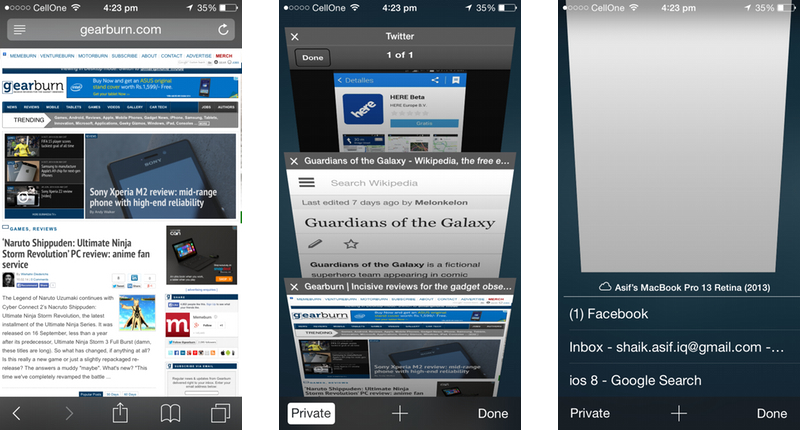
Safari has received a huge design overhaul with iOS 7 but there are no drastic changes with iOS 8. Similar to Spotlight, even Safari can showcase things like Wikipedia results, shortcuts to apps in AppStore, and locations in Apple Maps through search results. There’s an option to request desktop version of the website. Safari for iPad now resembles Safari on OS X Yosemite, which is a cheerful thing to notice. Also, DuckDuckGo (the anti-Google) can be set as the default search engine in Safari.
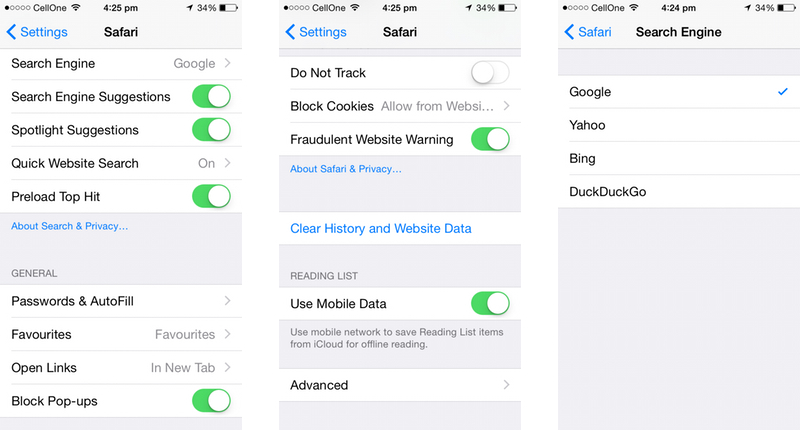
Camera & Photos
With iOS 7, Apple had introduced abilities to record slow-motion videos and square images, complete with photo effects. With iOS 8, the stock camera app gets the ability to record time-lapse videos. It allows recording of a frame in every two seconds and then creates a 30fps video (without audio) from those captured images. These kinds of videos are beautiful to look at, especially the ones of landscape images such as waves or clouds moving. Apple has introduced this feature almost three years after Google introduced it in Ice Cream Sandwich, though. Apple has limited it to 1080p resolution instead of 4K as it is still using a 4:3 image sensor and 3840x2160p images can’t currently be shot using an iPhone camera.
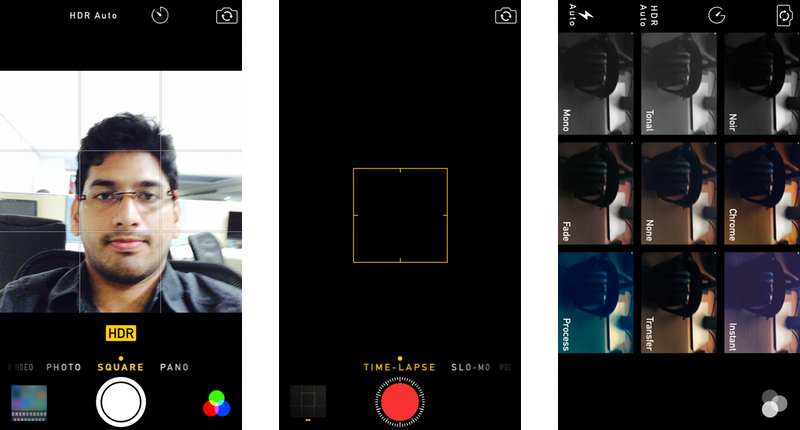
The new timer feature lets users set a three second or ten second delay before clicking images in burst mode, just in case someone blinks an eye. I found this feature to be rather intelligent as none of the other phones seem to be able to record images in burst mode while using a timer.
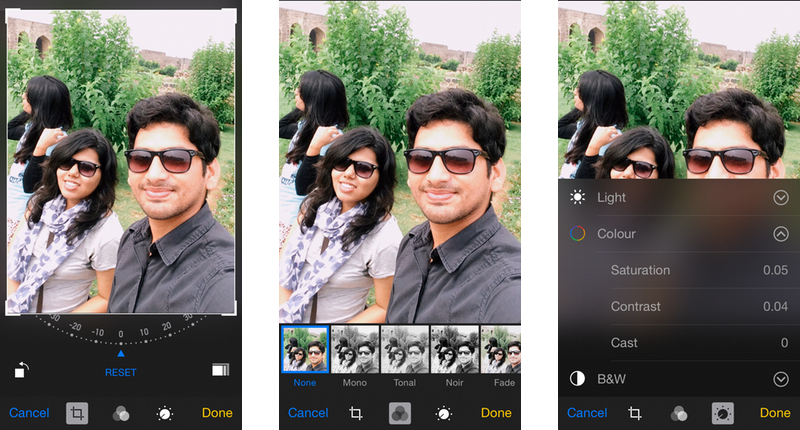
Even though Apple was in favour of hiding complex features and providing great images automatically, it is slowly adding further advanced features. For example: Apple’s included the exposure settings in the camera app. It is displayed as a vertical slider beside the focus ring but only while using tap-to-focus. All these features have paved their way into the iPad as well.

The Photos app has received a number of excellent additions. The Camera Roll has now been renamed to Recently Added, which seems logical as the images from other apps were also saved in the camera roll until iOS 7. There are separate albums for Panoramas, Videos, Slo-Mo videos and recently deleted images/videos. All the deleted images and videos are moved to the Recently Deleted album, thus giving an ability to recover them within 30 days, if they were deleted accidentally. The Photos app also received many new editing features, as the iPhoto app is being dropped. If current iPhoto app users open it, all the photos will be transferred to the Photos app. Image editing options include cropping in various aspect ratios (including free size ratio), eight photo effects, lighting, colour and B&W, each with its own set of sub-options. But these editing features aren’t half as powerful when compared to the iPhoto app. Once again, it looks like Apple is shunning power users. These type of users will most probably shift to third-party image editing apps like Snapseed or Luminance.
Homescreen, Lockscreen, Control Centre & Spotlight Search
There is no visible change to the homescreen or the lockscreen but you can see a shortcut to access Medical ID on the emergency screen. I will explain more about Medical ID later. The Control Centre, which was introduced with iOS 7, has received some subtle design changes. Now, the quick setting toggles which are activated can be easily distinguished from disabled toggles due to extensive use of white colour.
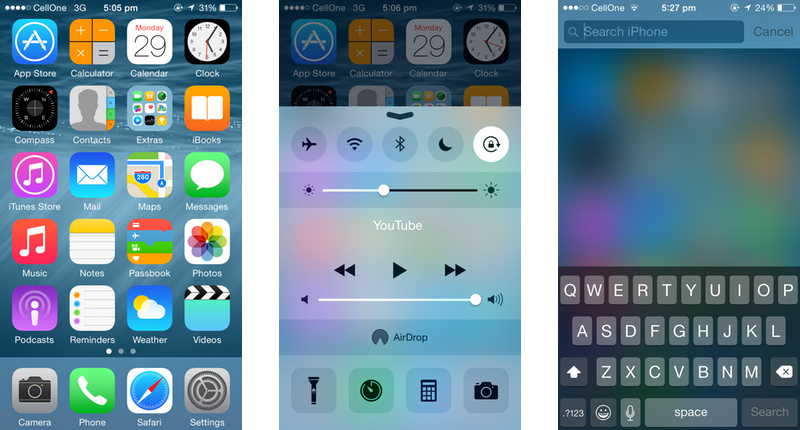
When accessing Spotlight Search in iOS 8, all the icons on the home screen disappear behind the translucent overlay. This means no stutter while using Spotlight Search. Also, it gives more emphasis on the search action itself. It now shows search results from installed apps, web and Wikipedia.
Notifications, widgets & multitasking
Notifications are divided into three tabs; Today, Missed, and All. Weather information is now sourced from Weather Underground instead of Yahoo Weather. Apple has introduced Actionable Notifications which means that you can just pull down the notification for a quick reply, even without opening the main app. The same action can be achieved by swiping a notifications towards left, such as for notification from the Messages app.
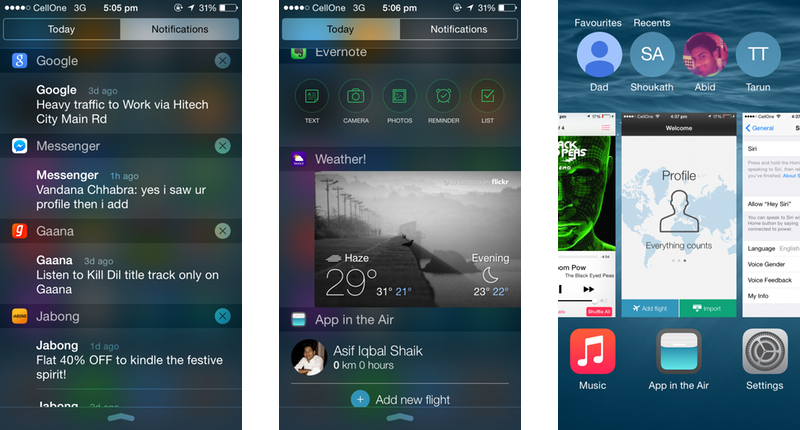
A welcome addition for the notifications bar is access to third-party widgets. Third-party apps such as Clear, Day One, Evernote, Yahoo Weather, and App in the Air can now display vital information and quick actions in the notification section, through widgets.
Since the widgets in iOS 8 are placed in the notifications section, functionality is very limited when compared to Android widgets. Widgets can’t be resized or customised according to your liking but once you start using them, one advantage becomes clear: you can access them in any mode by swiping down. Widgets can be enabled or disable and their placement can be customised.
Multitasking menu now shows a new bar of recent or favourite contacts. It can be used to call your family or friends without opening the contacts or phone application. Example: You find a cutesy cat video via Safari or an RSS reader and you want to inform your family about it. Now you can double-tap the home button and call or text your contact without any hassles.
Hey Siri!
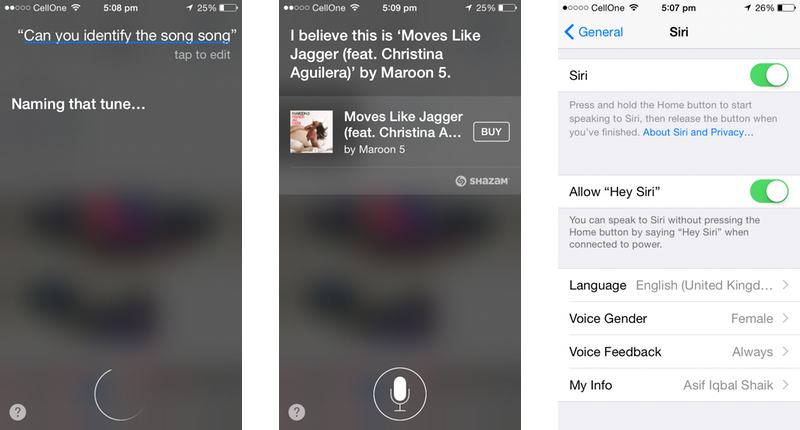
Apple has been constantly improving Siri with each new software update. With iOS 8, Siri can show streaming voice recognition. This means that it can show what a user is saying while they are performing a voice command. Siri can now recognise 22 new languages. From my experience, Siri has improved greatly with identifying Indian accent.
Taking an inspiration from “OK Google”, Apple has implemented an always-active Siri, though only when an iOS device is charging. Users can access Siri by saying “Hey Siri”, though this means that anyone with a voice would be able to perform quick actions such as sending messages or calling contacts.
Knock knock. Who’s there? Third-party keyboards

Apple’s new QuickType keyboard can not only correct words but even suggest/predict the next word. A horizontal bar above the keyboard shows word suggestions. Apple has also allowed third-party keyboards with system wide accessibility. This means that iOS users can now enjoy all types of keyboards which were available on Android. I installed and tried out two of my favourite keyboards from Android, namely SwiftKey and Fleksy and I was able to swipe-type on my iPhone 5S. Both these keyboards were quite buggy and performed a bit slower when compared to their Android versions. By default, third-party keyboards won’t have access to information from other apps or internet access, but developers can ask for them.
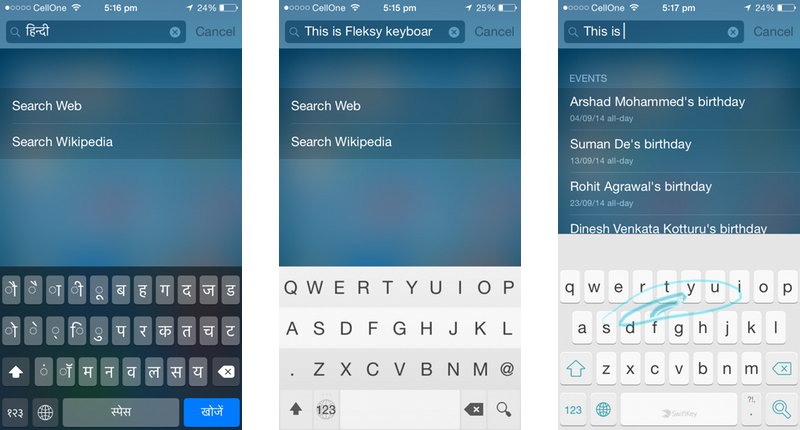
HealthKit & Medical ID
HealthKit can be seen as a single umbrella under which all the health and fitness related information of the user acquired from several apps can be showcased. Though it would only be possible if app developers decide to integrate HealthKit related APIs in their apps. At the time of this review, I wasn’t able to find even a single app that used HealthKit. It consists of four tabs: the first one shows dashboards for health- and fitness-related data in the form of attractive graphs, the second tab displays health-related data captured from all compatible apps, the third tab displays the list of apps from which the data is sourced while the fourth tab shows Medical ID.

Medical ID lists emergency contacts, personal information and medical information. It lists blood type, known allergies, medications, organ donor status, and medical conditions of the user. Medical ID would be extremely helpful in some emergency cases where the user isn’t able to relay this information themselves. Right now, Medical ID is only available for iOS 8 compatible iPhones but I really think that it should extend it to every possible Apple device as it would prove to be extremely helpful.
App Store & App Bundles
Apple’s App Store now allows video previews of applications which will help both users and developers. Video previews of apps help app developers showcase their app to the users in a better way. App developers can now bundle several apps together and sell them at a discounted rate.
With a new feature called Family Sharing, up to six users who are using the same credit card can be added into a group. Parents or guardians can now accept or decline a request for app purchases. No more of this crap.
iCloud Drive, Sharing & AirDrop
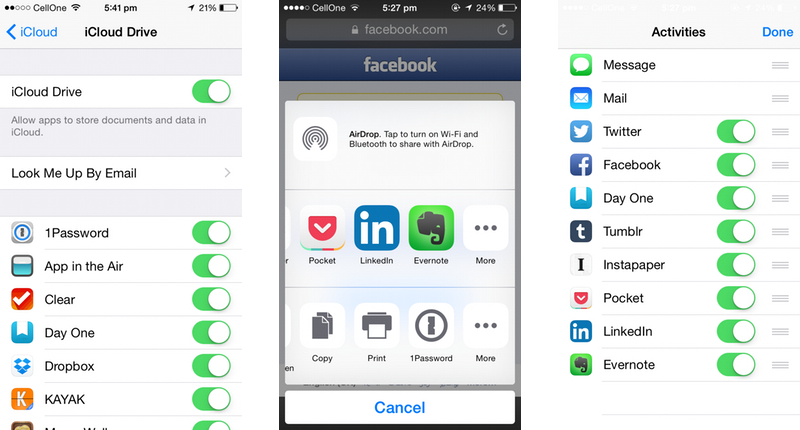
A large part of improvements in iCloud is the introduction of iCloud Drive. Earlier, Apple had decided in favour of now showing the physical files in iCloud, and let app developers do the implementation part behind the curtains. But the new iCloud Drive will lets users see and access individual files from a document picker in iOS (or a separate folder in Finder in OS X Yosemite). Each app with iCloud Drive integration will have its folder visible (provided that the developer has marked it public).
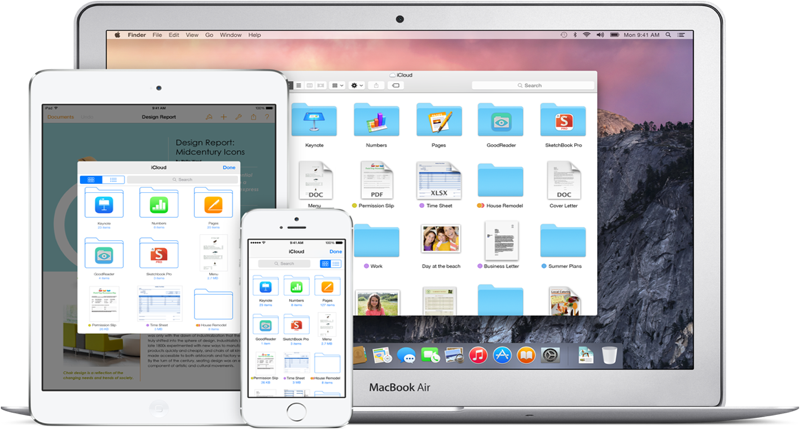
Traditionally, iOS has been developed without an open file system, so files related to each app are enclosed within a secure environment, so files could never be accessed as openly as in Android. But with iCloud Drive, users can finally access files from other apps, as long as app developers have integrated it in their apps and the user has an active internet connection. This way, users would need a lot of storage space in iCloud if they want to access large files.
Apple has introduced a completely new API, called the Extensibility. This new API lets app developers implement several new ways to share data to and from other apps without the need of iCloud Drive. I need to, nay I must expunge further
1. Until iOS 7, the Share menu used to list only those apps whose service was built into iOS or those whose developers have added support for other apps into theirs. The new share menu in iOS 8 lets third-party developers add their apps through Extensibility. Of course, many developers have not yet implemented Share Extension in their apps. For instance, I still can’t share an image directly from the Photos app to WhatsApp, though the list of compatible apps is bound to increase with time. The user can turn on or off the presence of an app in the Share menu.
2. Extensibility also includes Action Extensions. These extensions improve the capability of an app. With the release of this feature, Apple no longer needs to work closely with third-party developers/companies to include their features in the operating system. For example, 1Password can fill in your passwords for a website that you are browsing or Bing can automatically translate webpage written in your native language within the browser. There are only a few Action Extensions as of now and I’ve seen it work only in Safari. The app developer needs to include the Share menu in their apps for Action Extension to work. This feature is intelligent enough to know the kind of action which can be initiated and shows only compatible Action Extensions. For instance, only image-related actions would be displayed when sharing images rather than showing text related actions as well. This is as close as iOS can get to Android’s “Open With…” action.
3. The final extension is related to security and is only used in devices with inbuilt fingerprint sensor, such as the iPhone 5S, iPhone 6 and iPhone 6 Plus. Touch ID extension can be used by developers to unlock passwords stored in Keychain. As Apple says, they do not share the password data with the app but only a token which specifies whether the unlock attempt was successful or not.
Apple introduced limited P2P file sharing in iOS 7 with AirDrop but it was limited to iOS devices. Starting with iOS 8, users would be able to share files through AirDrop between iOS and Mac OS X devices. AirDrop now needs WiFi and Bluetooth to be activated for file transfers to happen. It worked well every time and the transfer speed was excellent.
Continuity & Handoff
For someone who has multiple Apple devices, features like Continuity and Handoff would turn out to be extremely productive. When an iOS 8 device is used in conjunction with a Mac OS X Yosemite device, users can start a task in one device and continue it on the other. For example, an iWork document or an email can be started on the iMac and continued to the iPhone. The Handoff works when both the devices have Bluetooth v4.0 LE and are using the same iCloud account. Currently the apps which can make use of Handoff feature are: Calendar, Contacts, iWork (Keynote, Numbers, and Pages), Mail, Maps, Messages, Reminders and Safari.
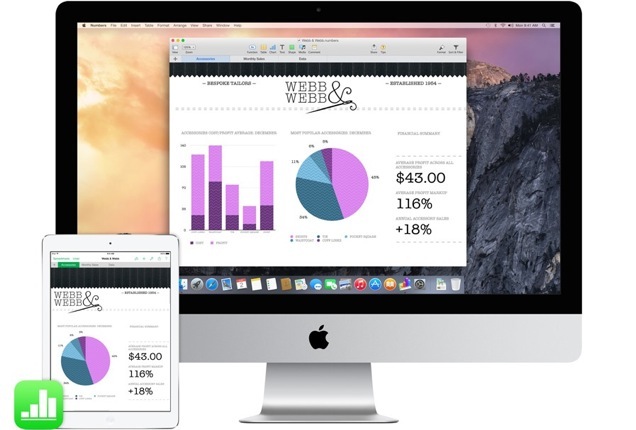
Apple is providing API’s for Handoff to third-party app developers as well as website developers. For example, it would be possible to start composing an MS Word document on Office365 and continue it later on the MS Office app for iPad. Apple also showcased a scenario where users would also be able to take calls from the iPhone on an iPad or a Macbook when they are connected to the same WiFi network.

New Settings
There’s not a lot that has changed in the settings section but there are some notable additions such as battery usage which breaks it down by individual apps over the period of 24 hours, as well as a period of the last seven days. This could be extremely helpful with identifying rogue apps consuming more battery than they should. Wallpaper, Display and Brightness settings are now segregated. Personal Hotspot is now promoted from within the Cellular settings to its own section. All the carrier related settings such as Phone, Messages, FaceTime, Mobile and Carrier are now green-coloured for easier understanding.

Another interesting point to note is that any app which accesses internet is listed in the Settings menu, and there’s an option to restrict data for each app. Apart from Use Mobile Data, a toggle to enable or disable Background App Refresh is also present.
Performance, Bugs
Just like every new iOS release, Apple has promised speed and performance improvements but as we’ve seen earlier, it takes a couple of small updates before everything runs smoothly. Right now, there are some performance related issues and bugs. I’ve experienced the Settings app crash a lot of times and lag in the lockscreen. Users of iPhone and iPad worldwide are complaining about stuttering UI and dropped frames, especially on older devices like iPad 2, iPad (third-generation), and iPhone 4S.
Some of the other features of iOS 8 which are compatible only with the iPhone 6 Plus is dual-pane interface (for some native apps) when they are used in landscape mode. Even the home screen can be used in landscape mode on the iPhone 6 Plus. Due to its large screen size, double tapping the home button will bring down the whole interface as to offer easier one-handed usage.
Verdict: the iOS 8 update isn’t as huge as iOS 7 was but Apple has introduced many features which would help app developers make even more powerful apps. Users who have invested in multiple Apple products would find it even harder to leave the Apple camp, thanks to features such as widgets, extensions, continuity, handoff, family sharing, iCloud Drive, HealthKit, and third-party keyboards. With solid new additions and some surprising new features, iOS 8 is an excellent and free update for all compatible Apple devices.
Score: 9/10
